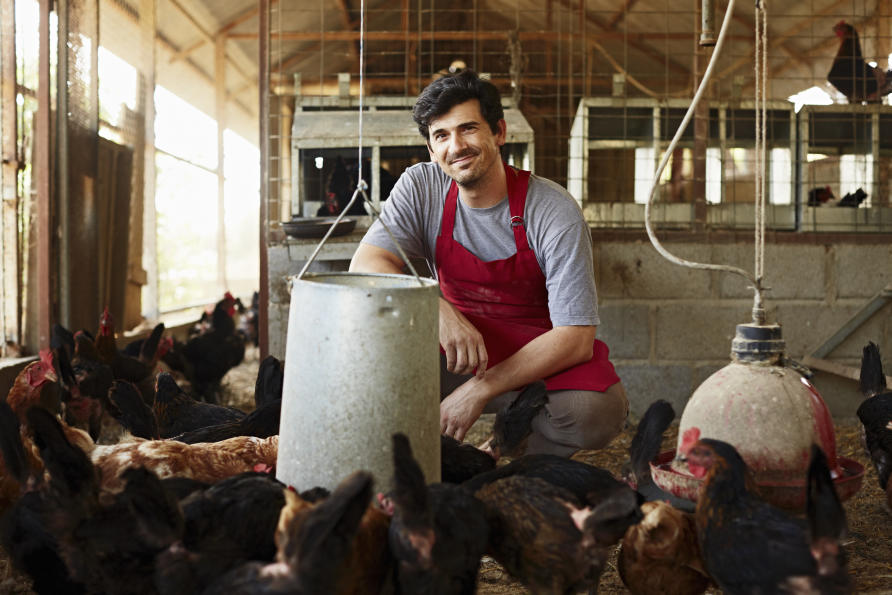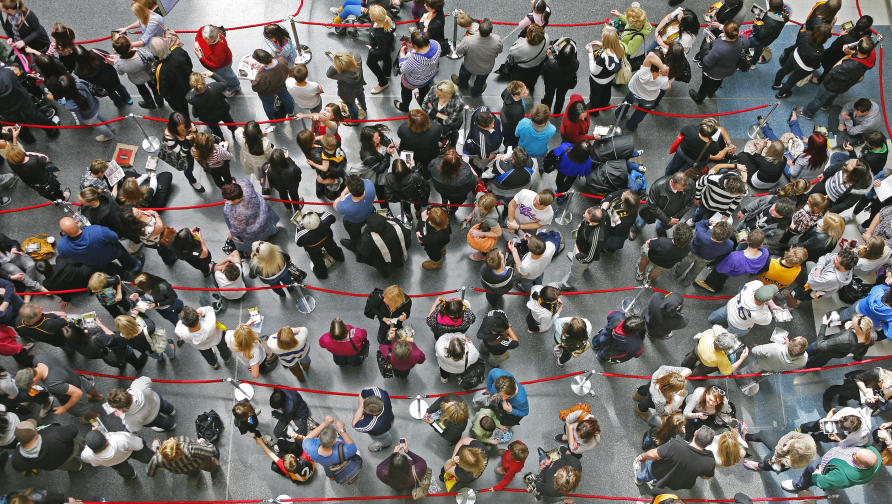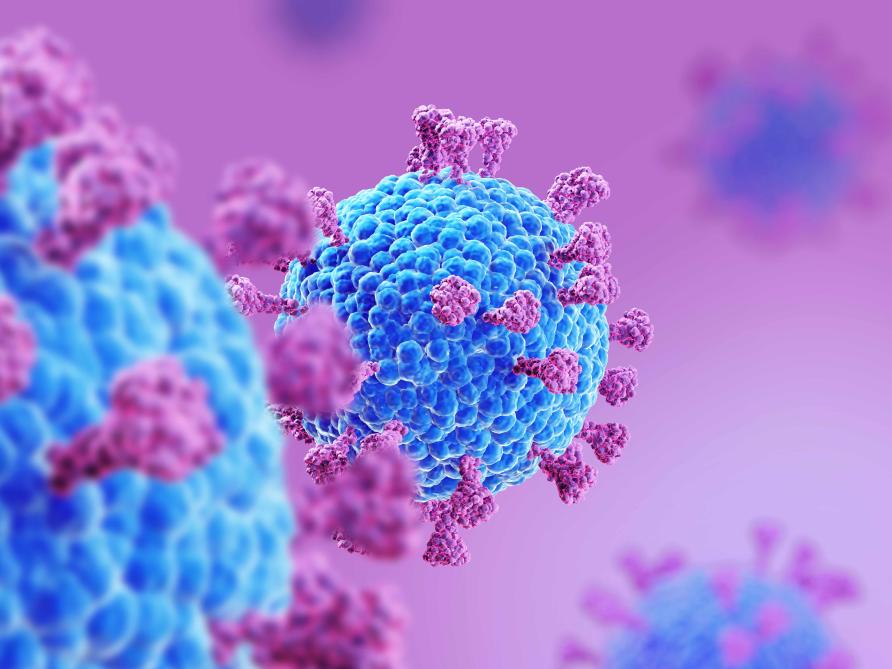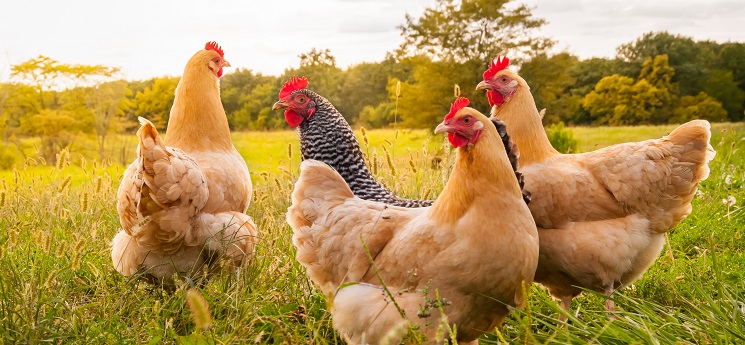As the world grapples with rolling out various vaccines for the SARS-CoV-2 virus that causes COVID-19, there are still many unknowns. For how long will a vaccine be effective? How effective will vaccines be against new strains? How optimal can we make future vaccines?
There are questions also over what future research will reveal about the virus. How does it affect people differently? Do we fully understand the mechanisms of transmission? What about future coronaviruses?
In the hunt for answers it would be wise to take a close look at chickens.

The first coronavirus ever discovered (back in the 1930s) was the avian coronavirus known as infectious bronchitis virus, or IBV. It is the most ubiquitous infectious agent of chickens.
It causes a highly contagious respiratory disease with significant economic losses to the global poultry industry. Due to its ubiquitous and highly contagious nature, almost all commercial chickens around the world are vaccinated against IBV.
An IBV vaccine is most commonly applied in the hatchery soon after chicks hatch and before they are transported to the growing farms where early exposure to the virus is expected.
In effect, the global poultry industry has learnt to live with IBV as its elimination is practically impossible, and vaccination has been the major strategy to combat it around the world.
It’s an encouraging achievement as we try to navigate a pathway towards living with human coronaviruses.
It also underscores the importance of what researchers call “one health” – an approach that recognises that the health of animals and plants has important ramifications for human health. How we protect chickens from IBV can help us to understand how we can protect ourselves from human coronaviruses.

Our team of researchers at the Asia Pacific Centre for Animal Health (APCAH) at the University of Melbourne has been investigating the epidemiology, molecular diagnosis and disease mechanism of IBV for the past 15 years. More recently, APCAH has secured an industry grant from AgriFutures to develop novel vaccines for the control of this globally significant disease of commercial chickens.
The project could potentially present a model for the effective control and prevention of human coronavirus SARS-CoV-2.
Like SARS-CoV-2, IBV primarily causes a respiratory disease. Also similarly to SARS-CoV-2, IBV infection can extend to other parts of the body. Recent evidence suggests that SARS-CoV-2 can affect the cardiovascular system leading to cardiac arrest, sometimes in the absence of respiratory illness.
Also, renal (kidney) failure has been recognised as one of the consequences of SARS-CoV-2 infection. Similarly, some strains of IBV may induce severe renal disease with or without respiratory involvement.
In egg laying hens, IBV can cause a severe drop in egg production and reduce the quality of the eggshell and albumen (egg white). If chicks become infected at an early age, IBV may cause permanent defects in the reproductive tract leading to infertility at the later stage of life. We need to be alert then to the potential for similar effects from SARS-CoV-2 and future human coronaviruses.
The incubation period for virulent strains of IBV is very short with symptoms emerging within 24-48 hours of infection. Similarly, the incubation period of SARS-CoV-2 can be quite short. Also, it is known that more than 80 per cent of people who were infected with the virus show symptoms, although this number is likely higher if low risk populations (for example children) are excluded.

The level of mortality caused by IBV in a population of chickens is highly dependent on the strain of the virus and the healthiness of the birds’ immune system, but it can reach up to 30 per cent. Mortality due to SARS-CoV-2 infection can be as high as 8 per cent in some countries, which is still lower than that of IBV, but this may be due to a higher level of care and medication provided to humans infected with SARS-CoV-2.
IBV is one of the very few infectious agents of poultry that can infect 100 per cent of the population in a very short period of time, often just 24 hours. This feature is paralleled in SARS-CoV-2 where infection can spread through a large population in an incredibly short period of time.
IBV spreads among poultry by inhalation of contaminated aerosols, or by ingestion of virus, which is shed in the faeces of infected chickens or other contaminated materials. Likewise, SARS-CoV-2 is transmitted through the respiratory system and virus particles have been found in the faeces of patients. However, in contrast to IBV, there is no evidence so far to suggest that the detected viral particles in human faeces are infective.
The fact that IBV can be spread through alimentary excretion should be a warning about the potential for a human coronavirus to be similarly transmissible. It is a possibility we need to be prepared for and know how to handle.
IBV and SARS-CoV-2 belong to the family Coronaviridae, and both have the typical club-shaped projections on their surface. Their chemical composition, genome structure and how they replicate are also highly comparable.
There have been many investigations on susceptibility of IBV to chemical and physical agents and this information can readily be expanded to SARS-CoV-2 as researchers seek to develop potential control strategies.

Like other coronaviruses, IBV can readily mutate. Also, different strains of IBV can recombine (especially when two or more strains infect the same host) and generate a new strain. These mechanisms explain the rapid evolution of IBV and the emergence of more virulent and transmissible strains since it was first reported in the 1930s – there are at least 32 different lineages identified so far.
Our recent research at APCAH has shown that frequent recombination events occur between live vaccine strains and evolutionary distant avian coronaviruses of unknown origin. Similarly, new SARS-CoV-2 mutations with higher transmissibility have emerged in the UK.
Given what we know about the evolution of IBV, we need to assume that further new SARS-CoV-2 strains may emerge in future that would potentially be more virulent, have different transmissibility or can infect different cells of the body.
In most countries, commercial chickens are vaccinated with a live attenuated vaccine strain (a live version of the virus that has been modified to be harmless but still prompts an effective immune response). It is applied by spraying chicks in the hatchery to ensure it reaches the chicken’s nasal mucosa.
Chickens with longer lifespans (such as commercial layers and breeders) receive a combination of multiple live attenuated and killed (inactivated) vaccines.
Importantly, the strain of the IBV used for vaccination needs to be selected carefully as cross protection between different strains is quite variable. Similar issues should be anticipated in the ongoing development of vaccines for human coronaviruses.

It is becoming increasingly evident that humans will need to live with SARS-CoV-2 and vaccines will be a key to this. Given the anticipated emergence of new SARS-CoV-2 strains in future, it will be important that vaccine companies have the capacity to develop alternative vaccines for new variants if and when needed.
The more we learn about SARS-CoV-2 the more parallels are emerging with IBV, emphasising the value of “one health”- the knowledge developed for treating a disease in a fellow animal can guide research, vaccine development and disease management for our own species.
Banner: Getty Images
How do you imagine living with COVID-19? How confident are you in the vaccines?
If you enjoy our content, don’t keep it to yourself. Share our free eNews with your friends and encourage them to sign up.
Related articles:
https://www.yourlifechoices.com.au/health/covid19/concerns-over-limited-data-on-how-vaccine-will-affect-over-65s
https://www.yourlifechoices.com.au/health/covid19/pfizer-vaccine-safe-despite-norwegian-deaths-say-health-authorities
https://www.yourlifechoices.com.au/health/covid19/intensive-care-during-covid-like-a-delirium-factory-study-finds

